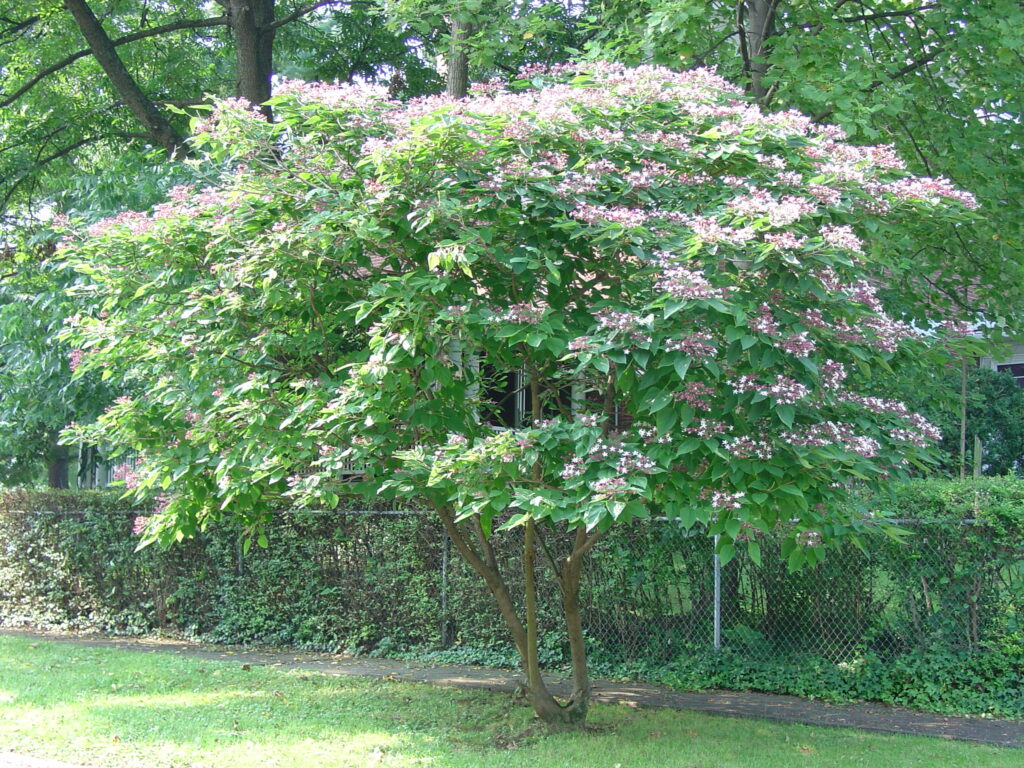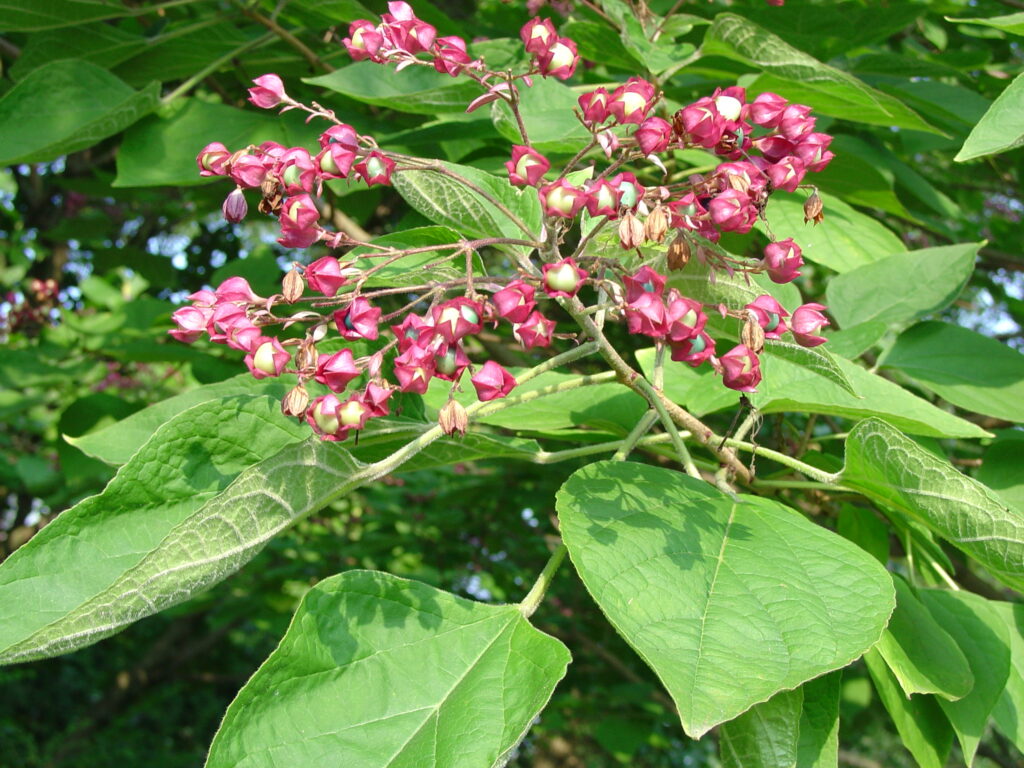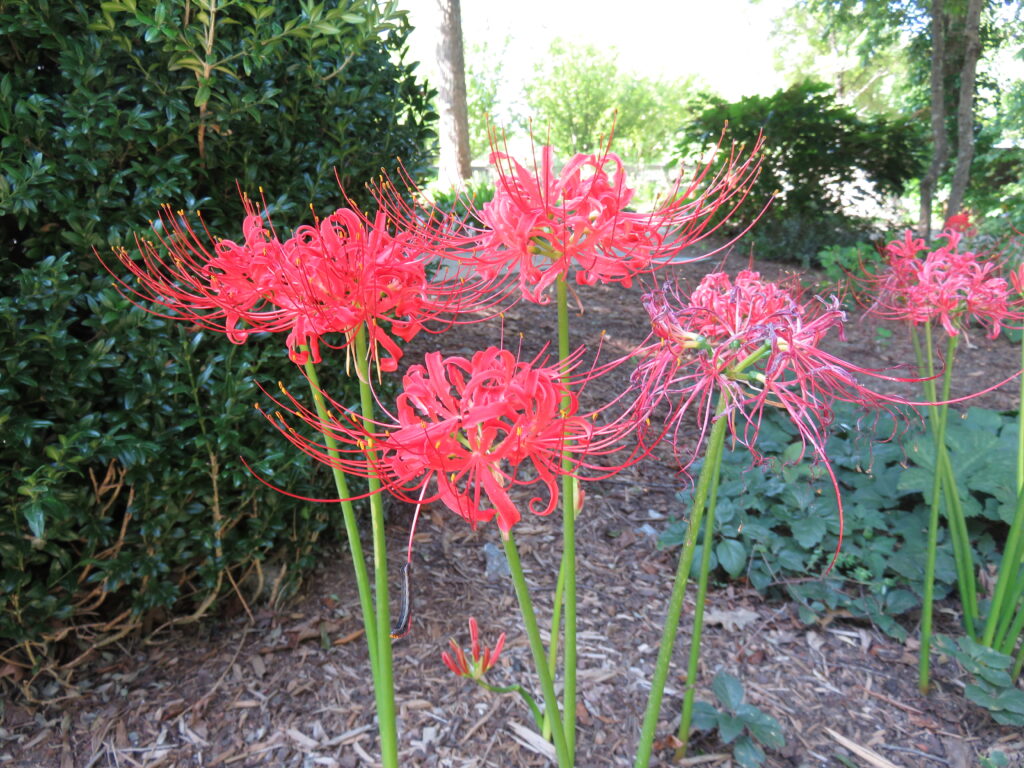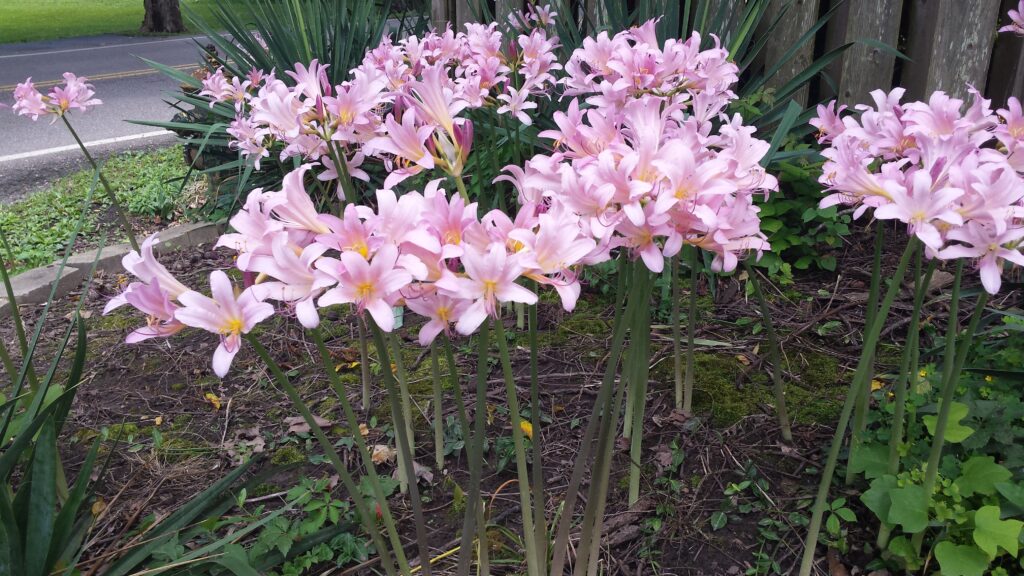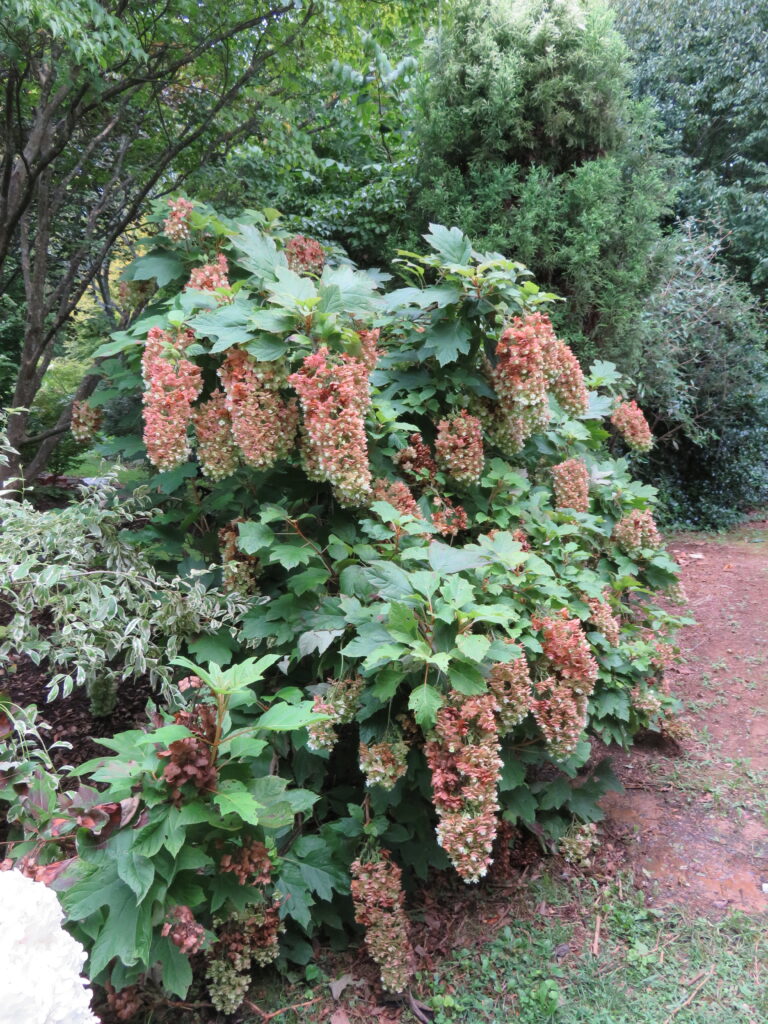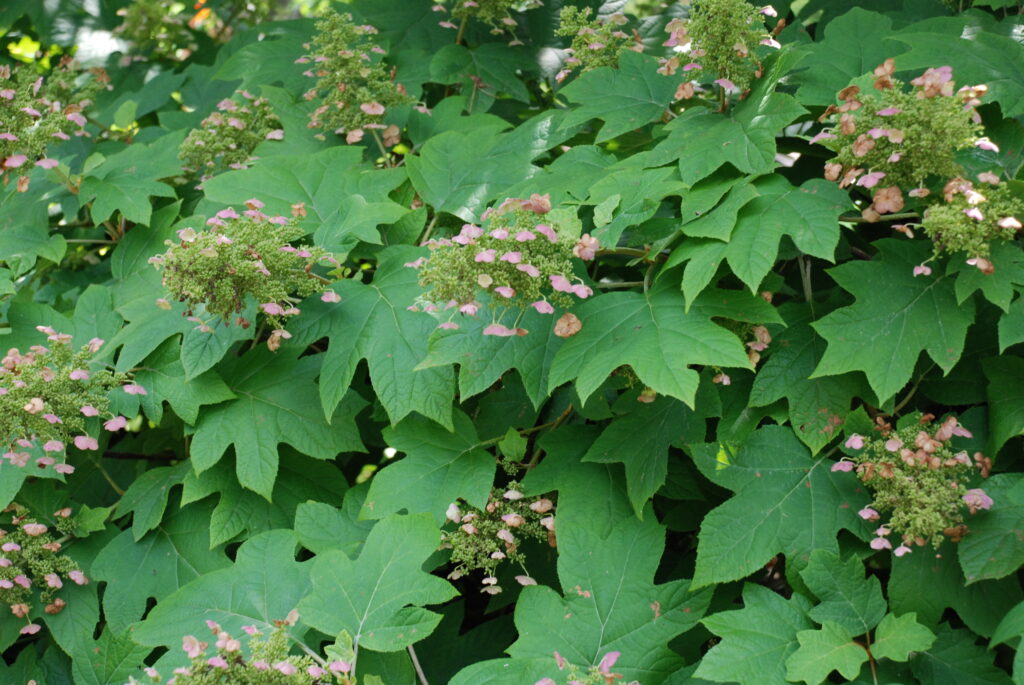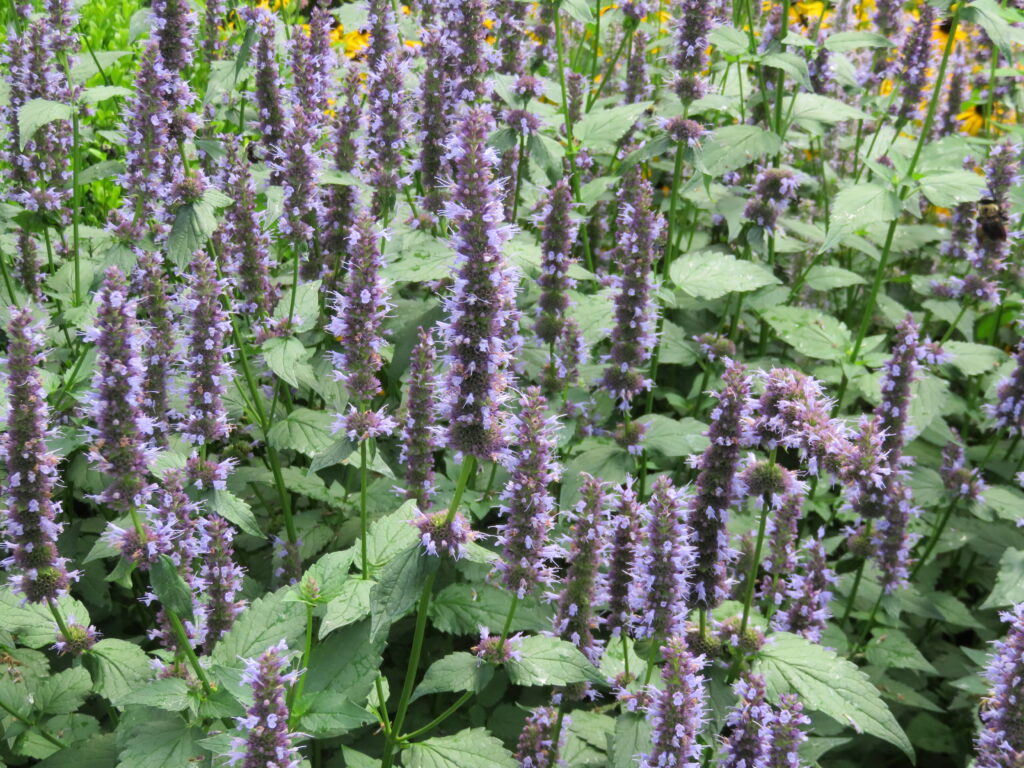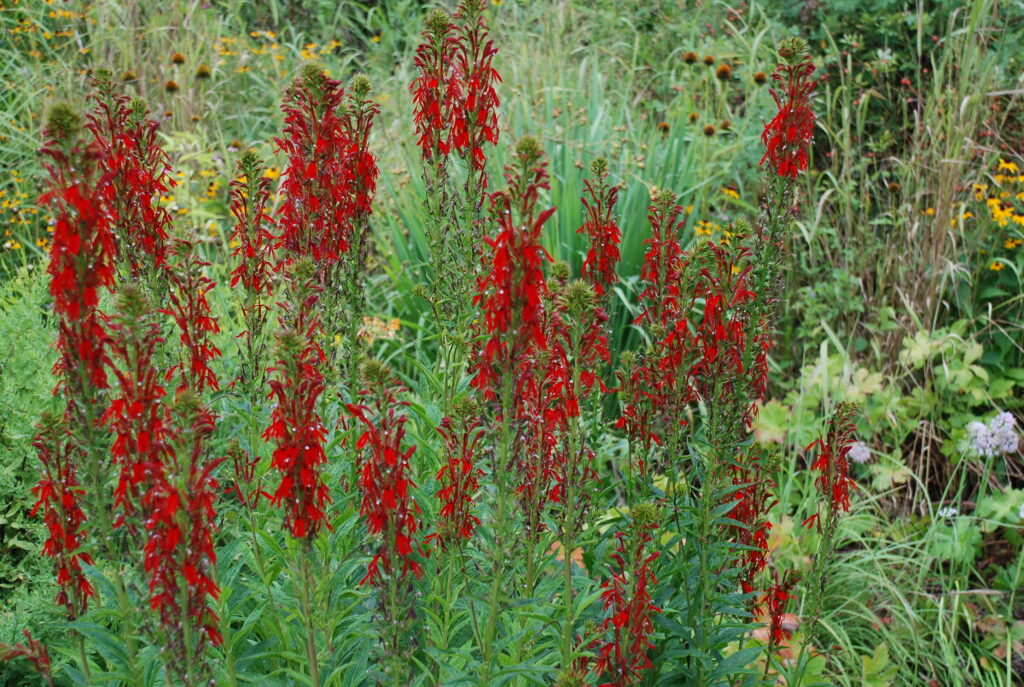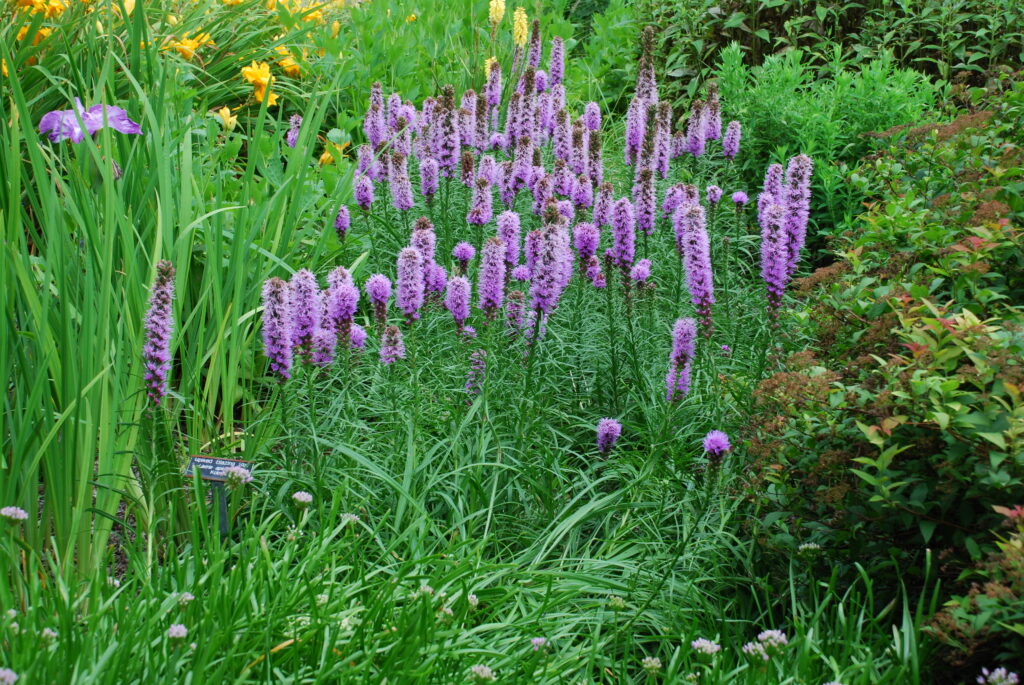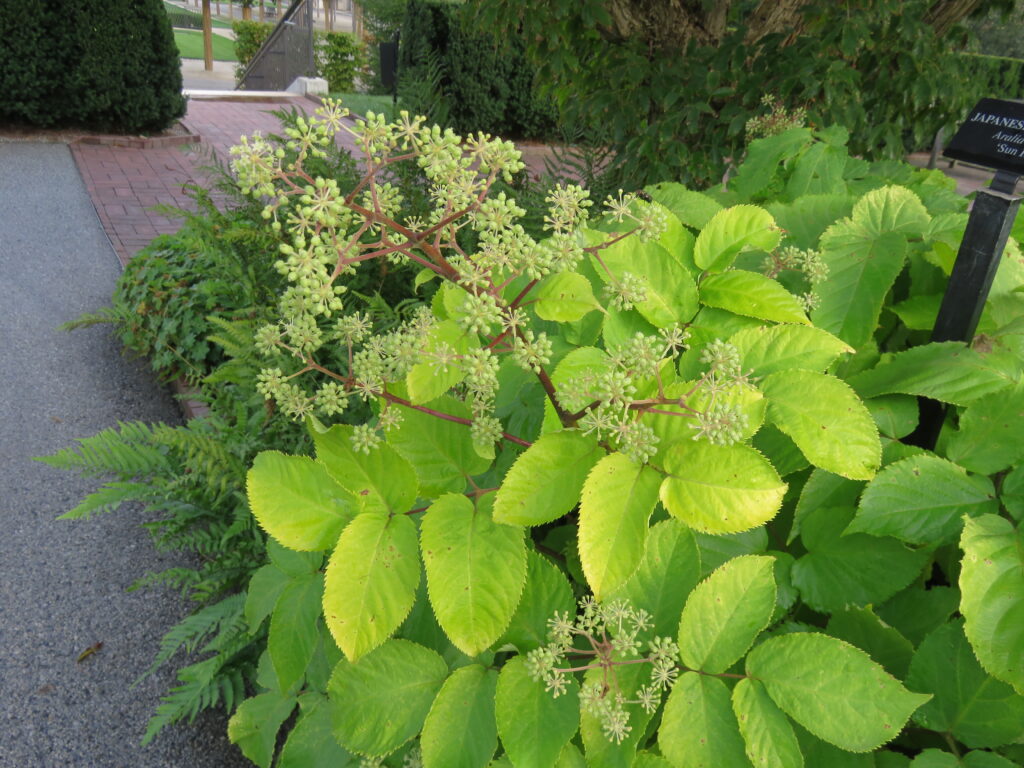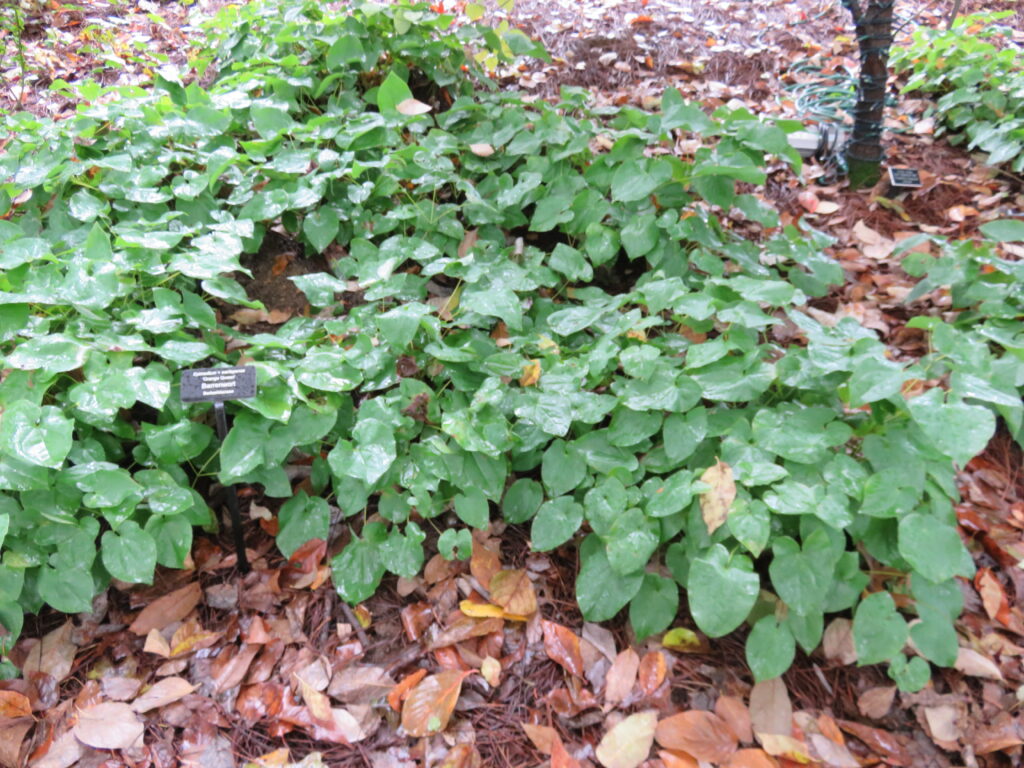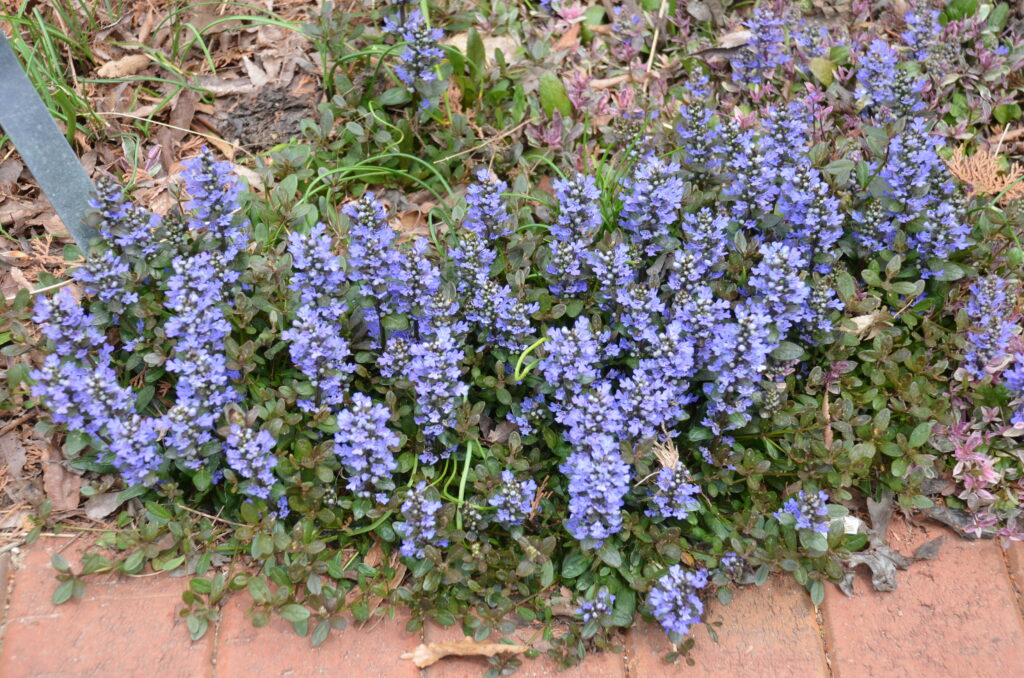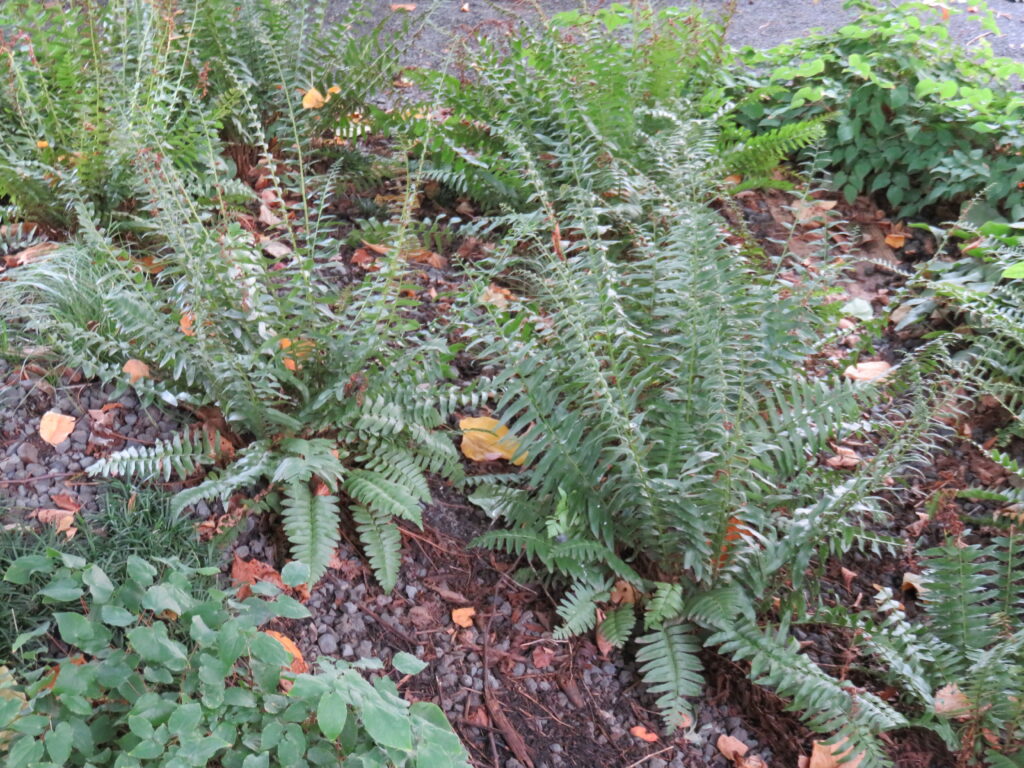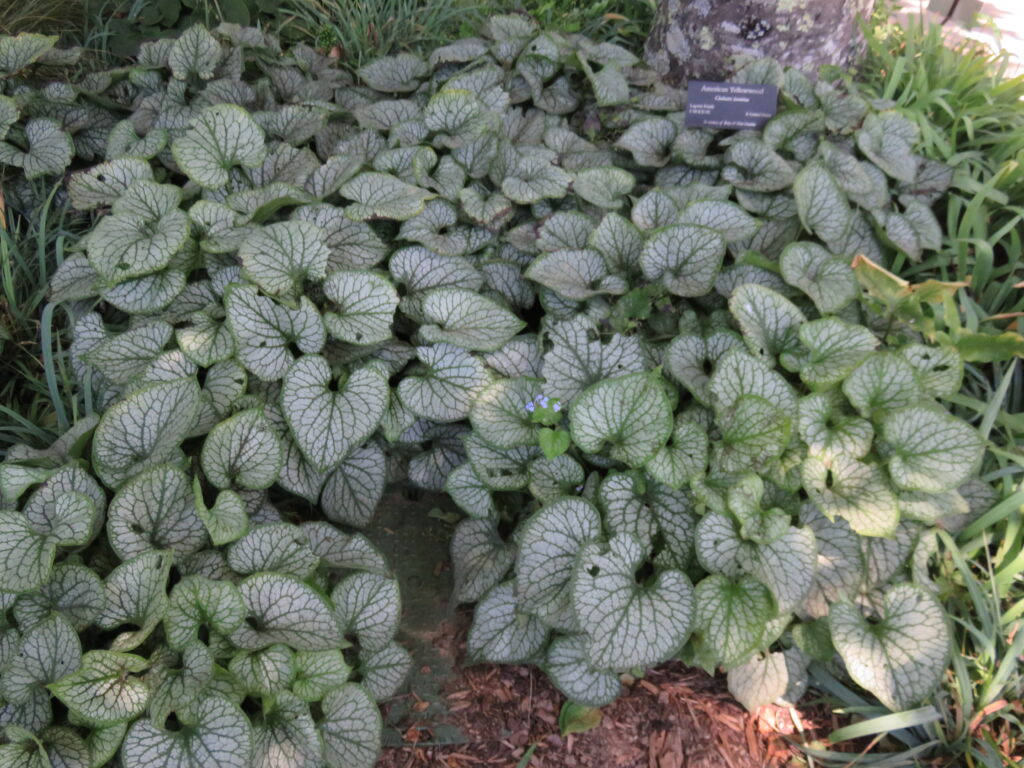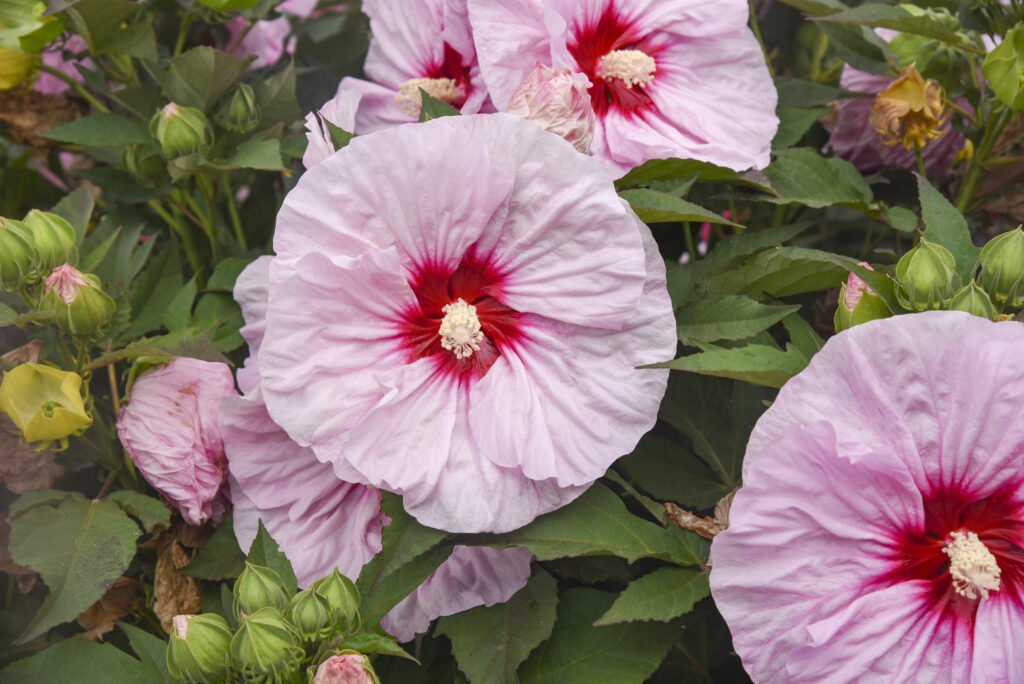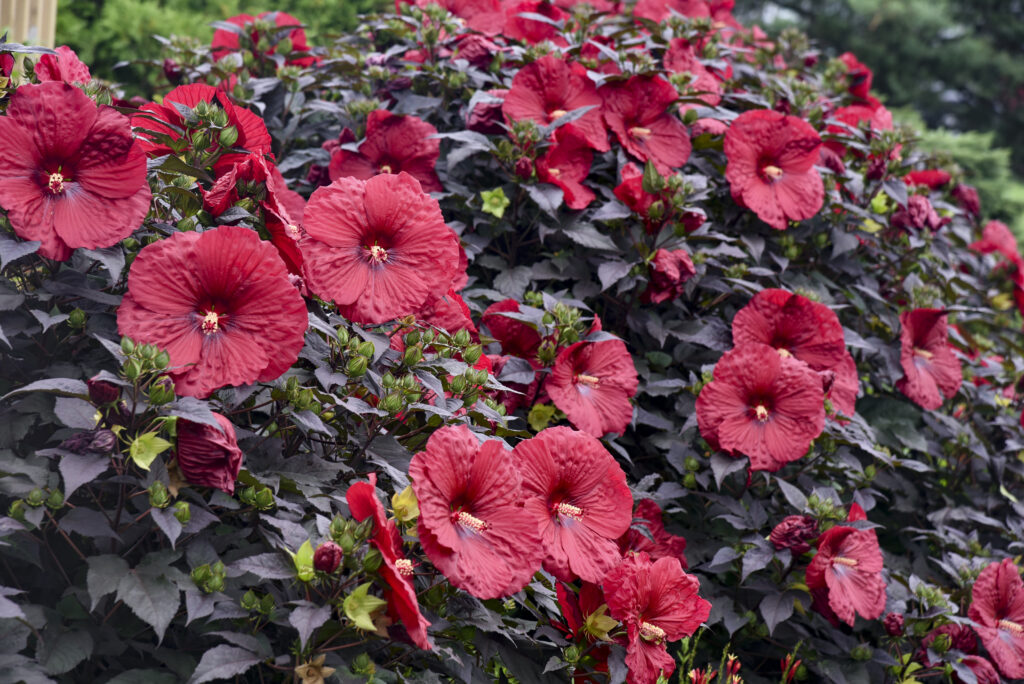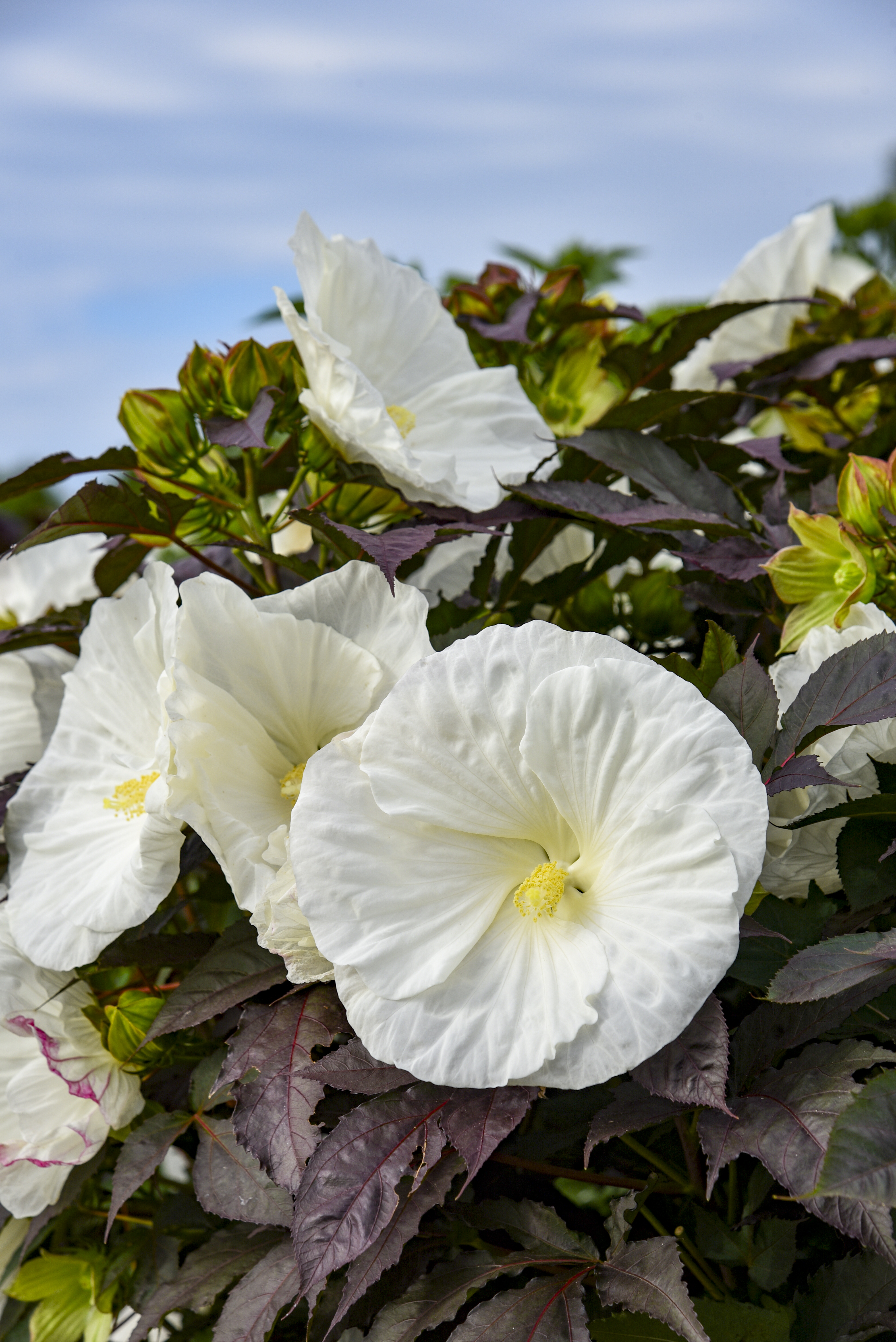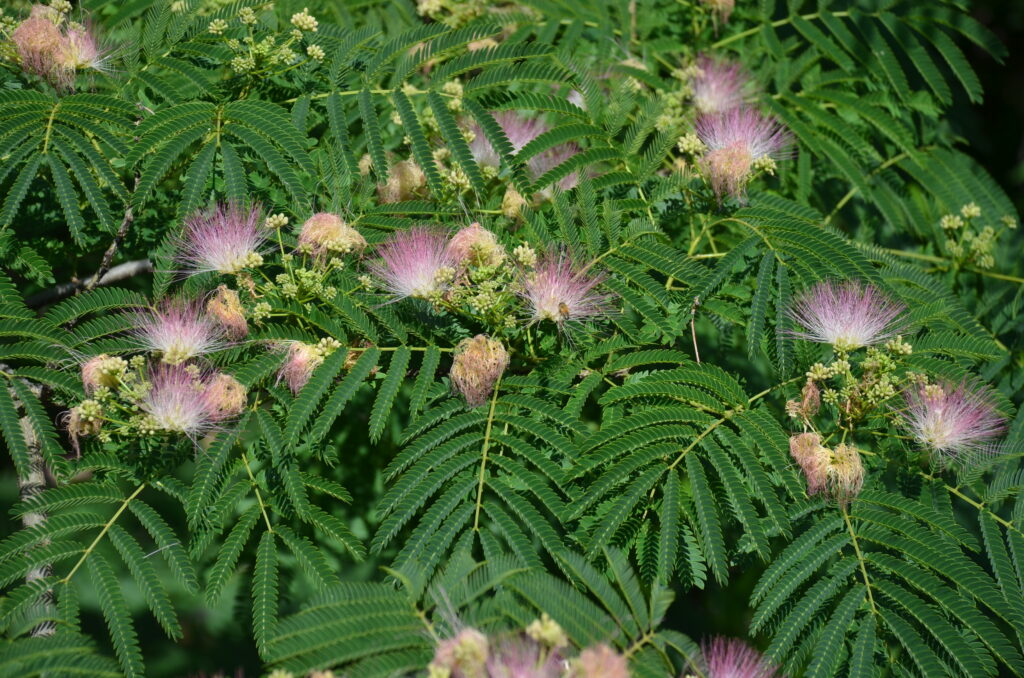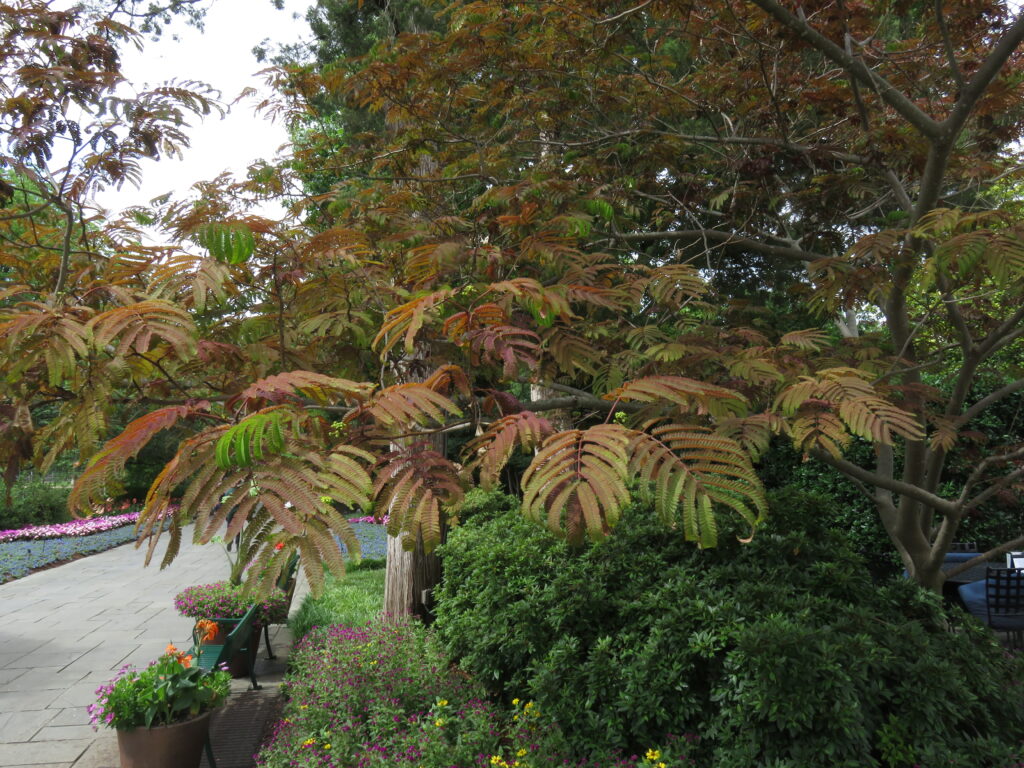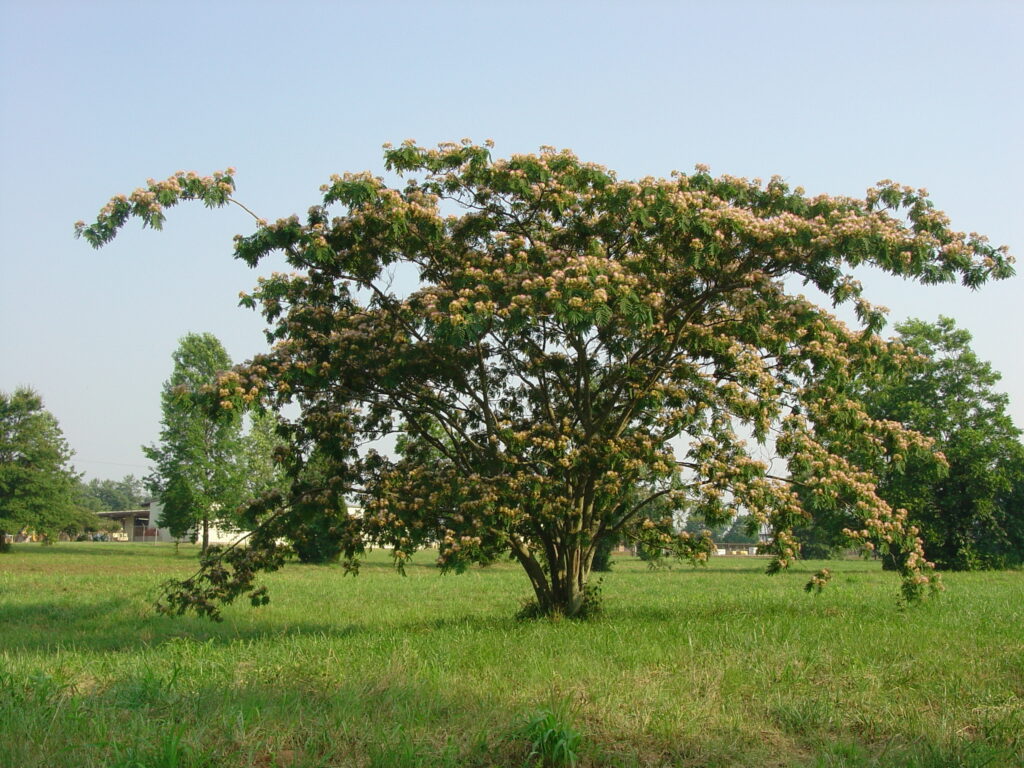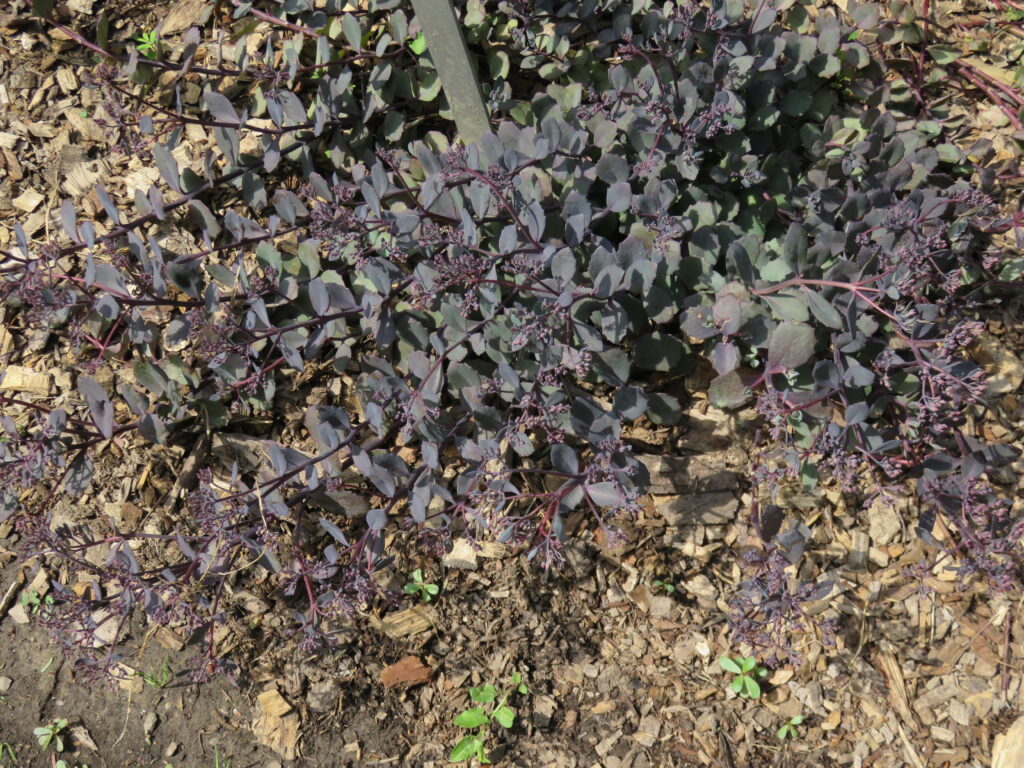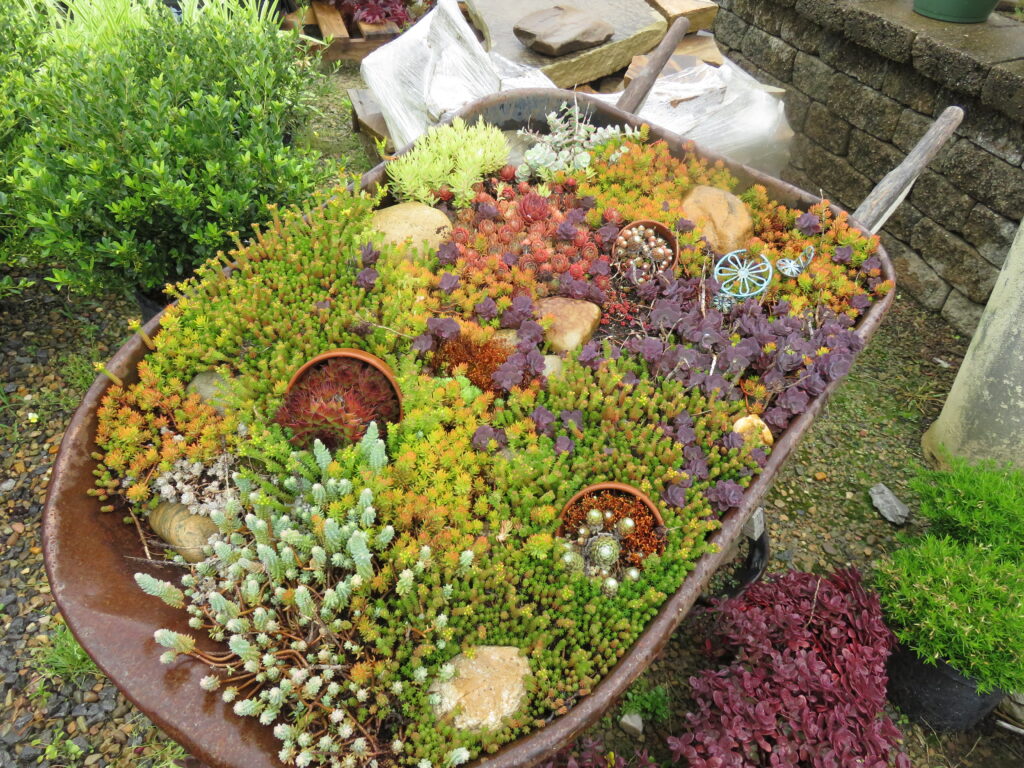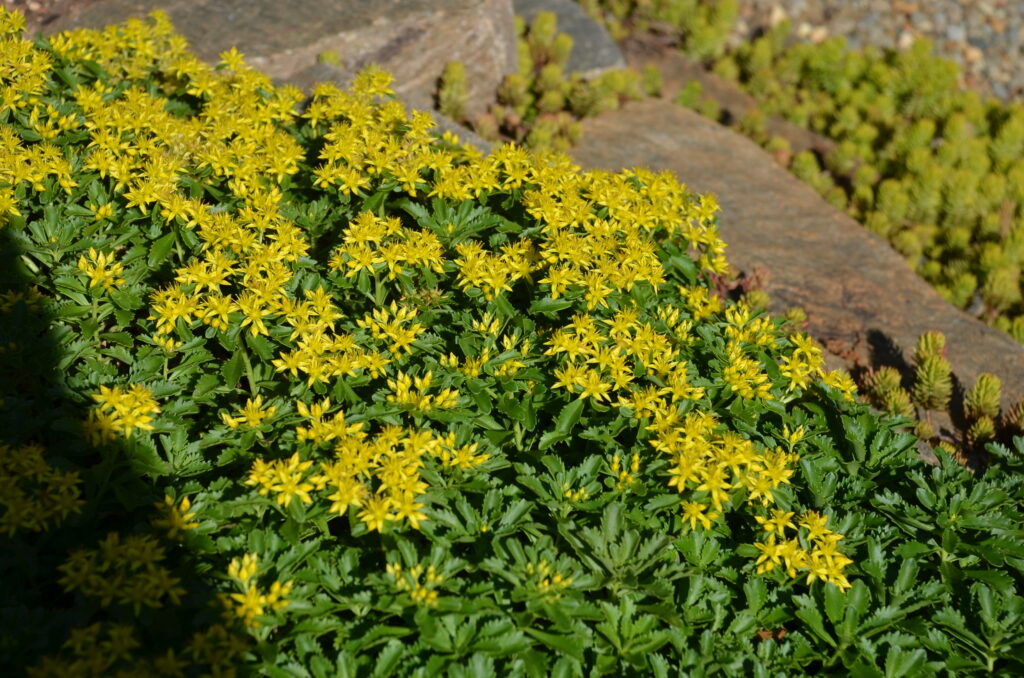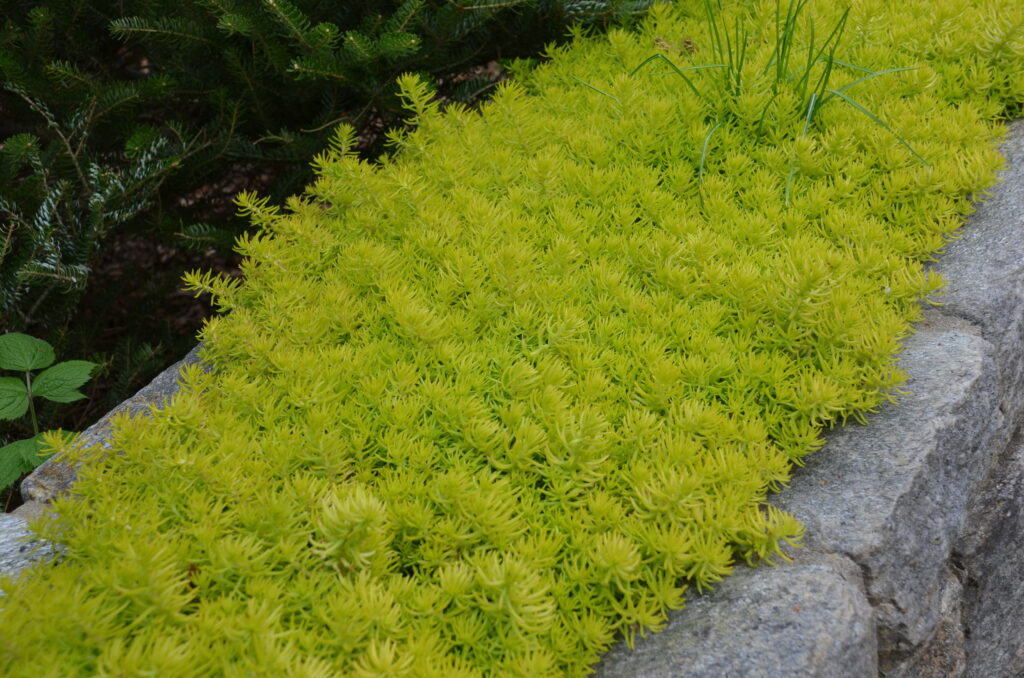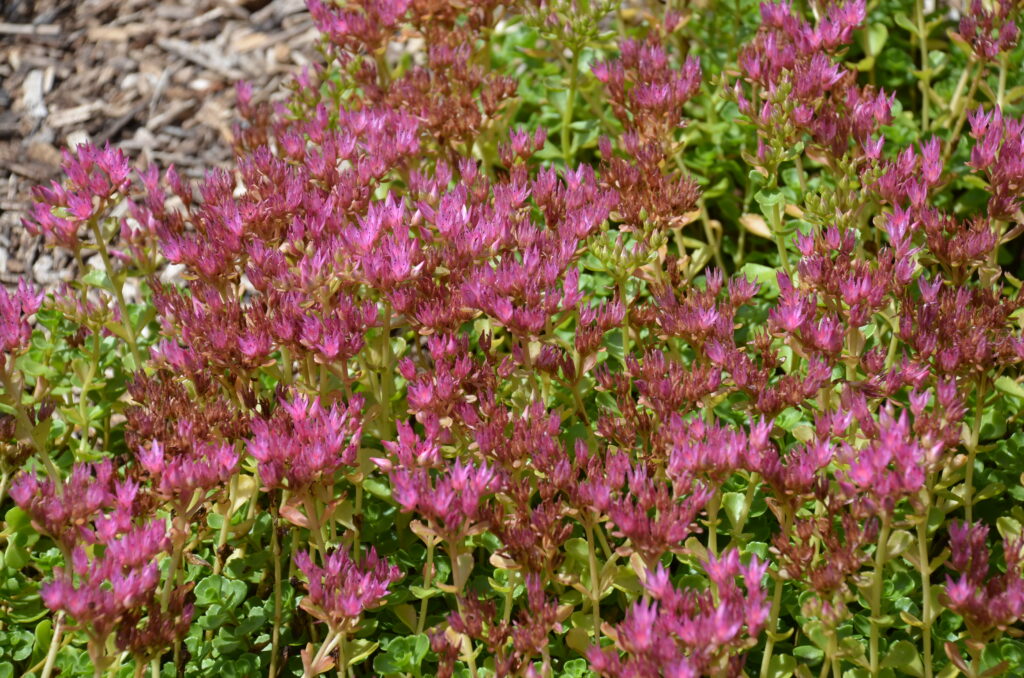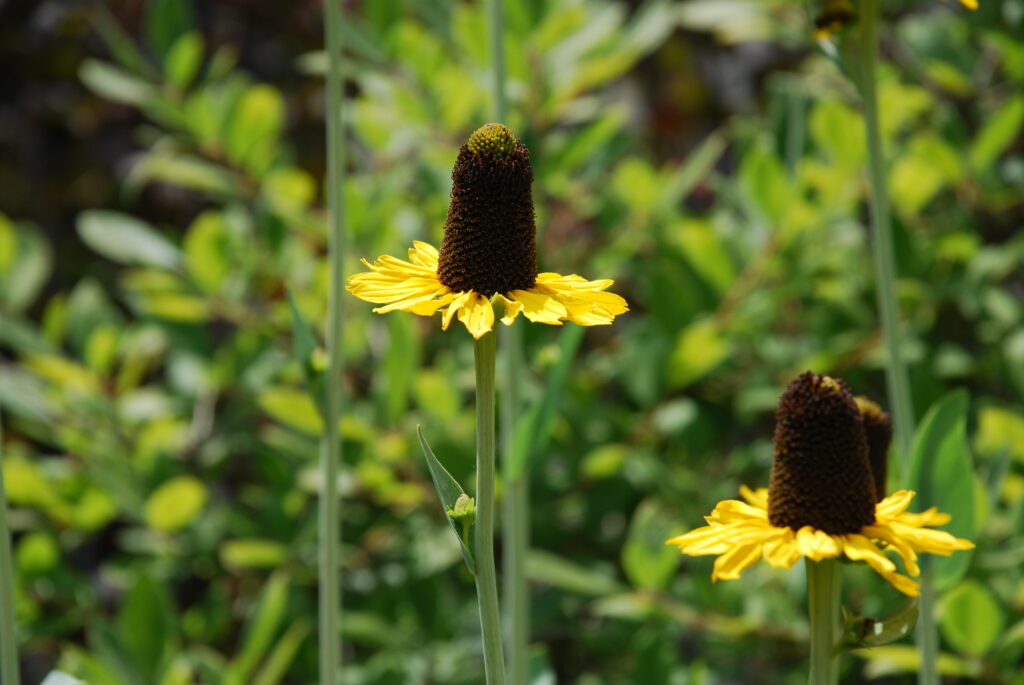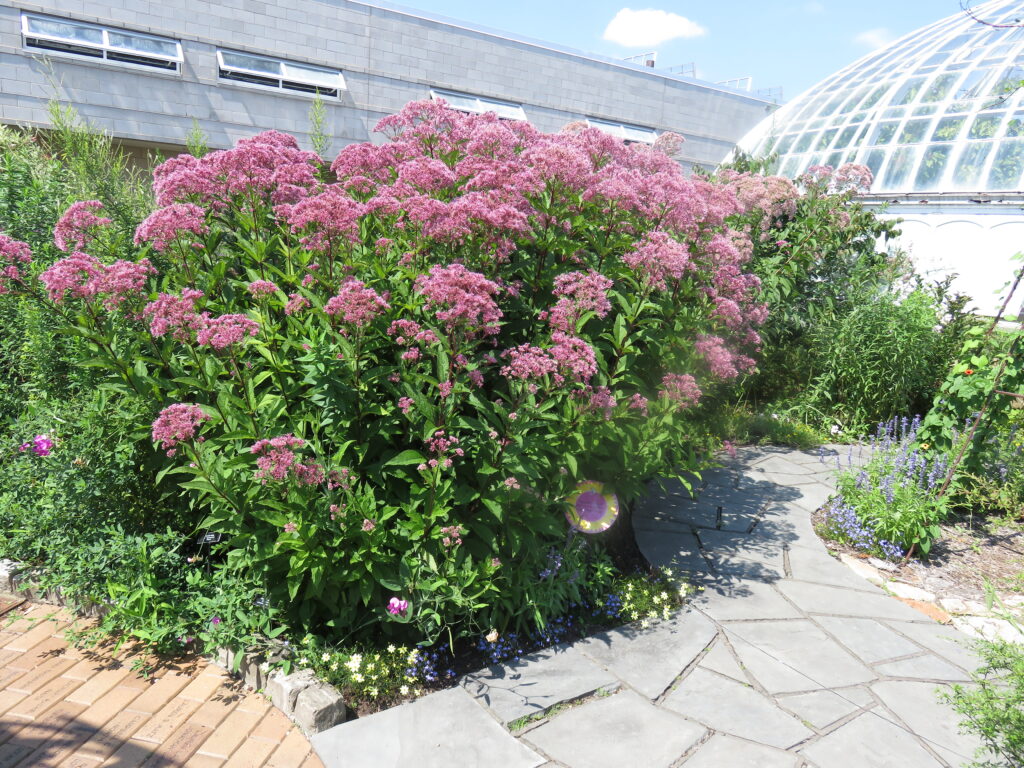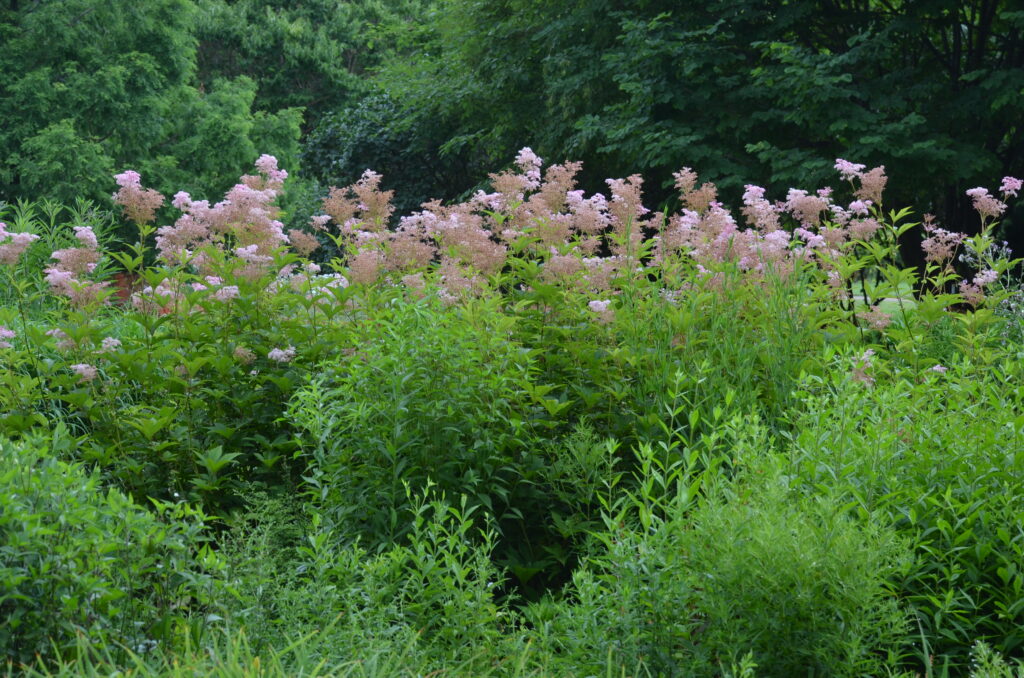Obedient plant (Physostegia virginiana) is a member of the mint family (Lamiaceae), and like garden mint, it spreads easily by rhizomes and easily self-seeds; the plant is not “obedient” in behavior. It is called “obedient plant” because each tubular flower will, upon being pushed in any one direction, stays in its new position. It grows in sunny, wet poorly drained sites. Plant this pink or white flowering beauty in a rain or prairie garden. It is also known as “false dragon head”. (USDA hardiness zones 3-9).
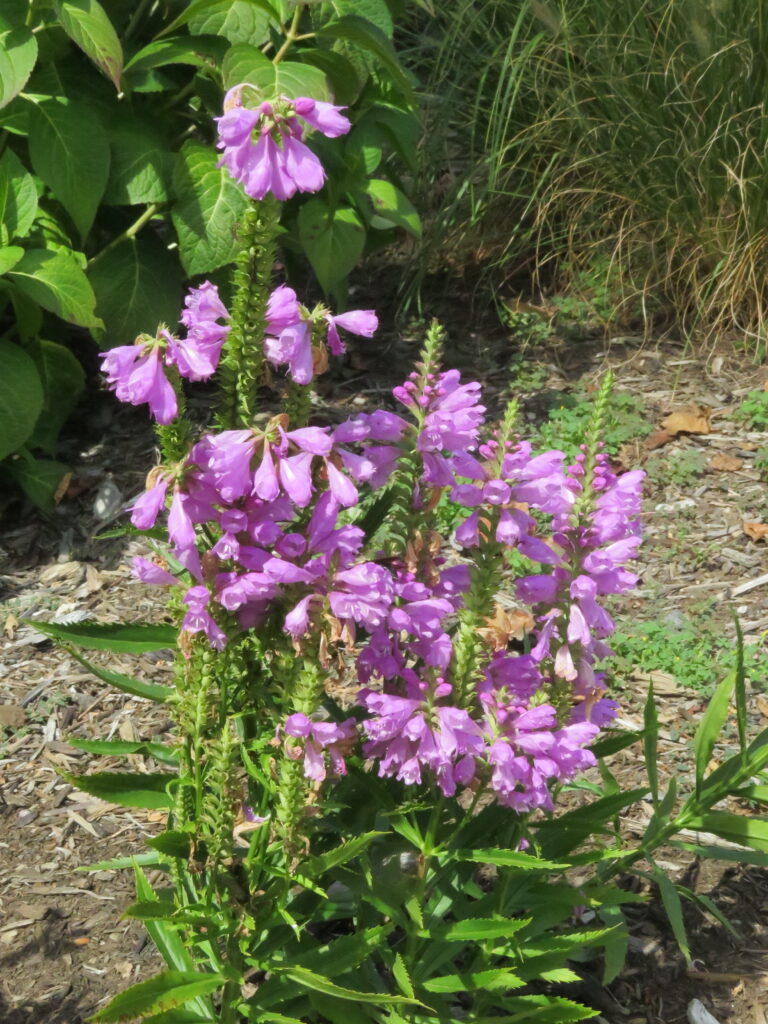
This native perennial blooms from July into late September obedient plant. Tubular, two-lipped pink (or white) flowers form in upright terminal spikes (each to 12-18 inches high) atop stems rising 3 to 3.5 feet high and 1 to 2 feet wide. Bees and butterflies love the blooms as well.
Obedient plant (the species) tends to seed-in and also spreads prolifically by rhizomes. The leading cultivar is a non-spreading form appropriately named ‘Miss Manners’. Its deep green, glossy foliage will please as will its snapdragon-like rose pink flowers. The seedling was chosen by Darrell Probst and is a shorter grower @2 to 2.5 feet high and 2 feet wide. Plants display a clumping habit with some secondary branching. Obedient plant promptly reblooms when deadheaded. Miss Manners tends not to seed-in and it grows on sturdy stems. ‘Summer Snow’ is a white flowering cultivar.
Full sun and/or low fertile soil is an ideal garden spot. Otherwise, plants tend to flop and require staking in light shade or in rich fertile soils. Prune back plants by half in late spring for increased branching and to minimize floppiness. Plants should be divided every 2-3 years to keep beds neat and not overcrowded.
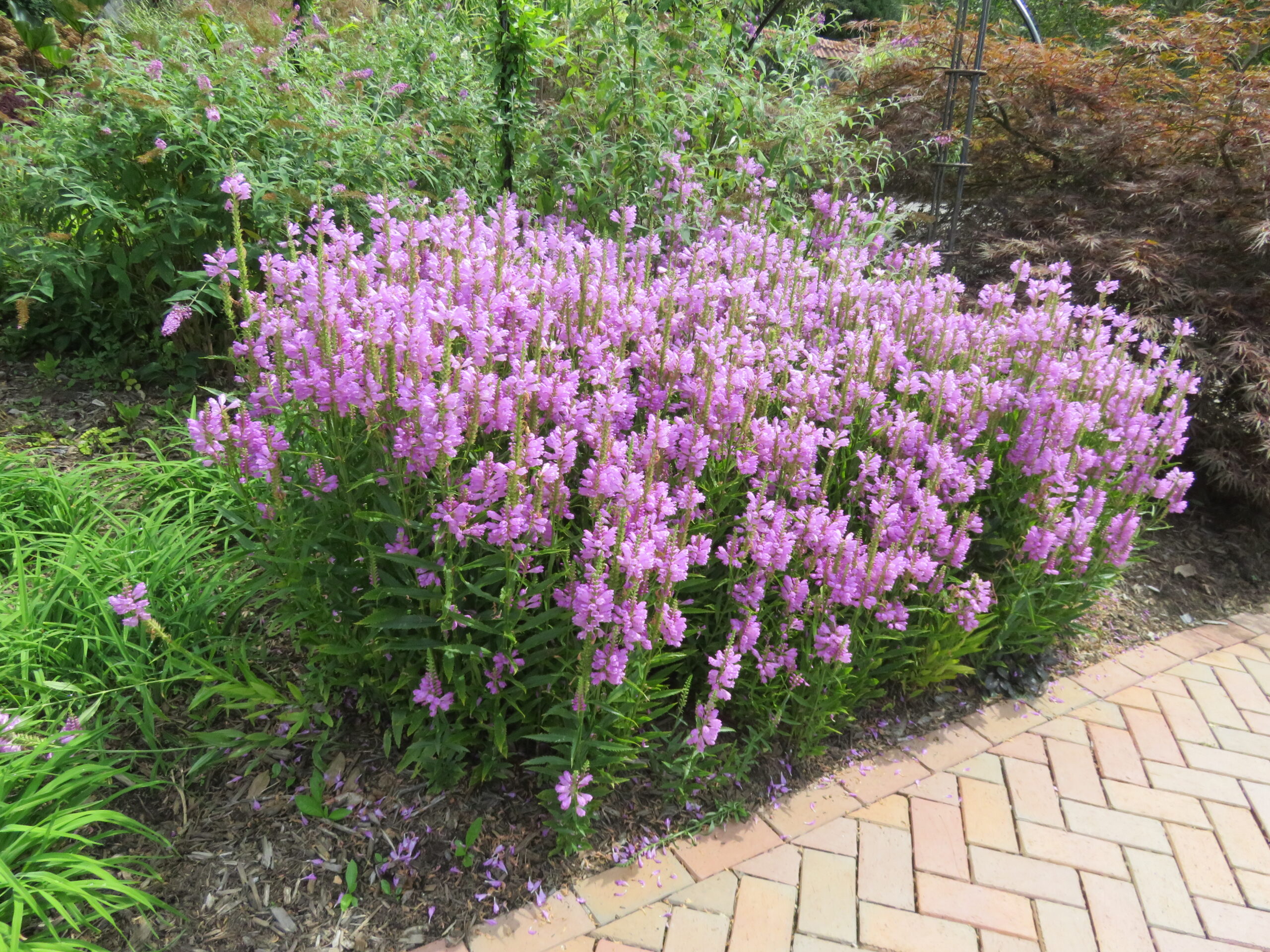
Obedient plant has no serious disease or pest problems, and deer generally avoid it. In wet summers rust disease may be troublesome. Periodically, inspect plants for aphids and spider mites. Include flowers in floral arrangements as the flowers “obediently” hold in almost any position you desire.

